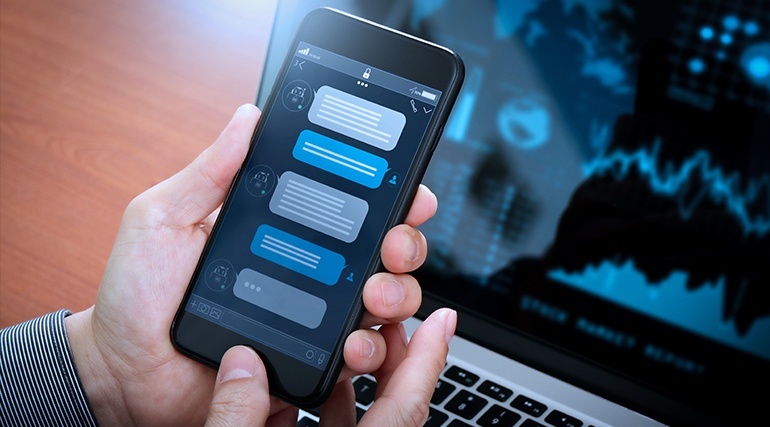When you think of a mobile app, what is the first one that comes to mind? Is it social networking, a game, or maybe a productivity tracker? Is it on your iPhone or your Android or a tablet? No matter what platform, apps have definitely come a long way. Many people believe that mobile apps came into existence with the creation of the first multi-touch smartphone (the Apple iPhone 1), but their history goes much further back.
Mobile Apps: Humble Beginnings
Many of us remember having a “smart” calculator or a now-antique mobile phone with the boredom-breaking game, Snake. The game’s premise was that you were a long line of pixels (or, dots) that turned left, right, up or down and had to eat other little dots. Each dot you ate made your “tail” longer, and your goal was to eat all the dots without touching any part of your own body. It was the boredom-buster in the 80s and 90s.
Other than the obvious games, the applications offered on mobile devices were very limited at the time. They ranged from ringtone makers, to address books, to calculators. While simple, they paved the way to the more modern, and easier to use, apps of today. Now mobile apps are coming with advanced applications like Augmented Reality, Artificial Intelligence, Computer Vision and so on to provide superior experiences to users.
WAP – Wireless Application Protocol
Wireless Application Protocol, or WAP, is a system for accessing information over a wireless mobile network. Before the development of smartphones that could access the internet via cellular connections, WAP was used for customers to download any extra apps that their phone's manufacturer offered. It was a fantastic idea in theory, but not so much in practice. Users quickly noticed that not only were they only able to download apps specific to their phone's manufacturer (or worse: their phone's model), but they had high usage charges, and actually receiving the apps was convoluted and challenging to do. Many people gave up trying to download any extra content to their phones due to these issues.
The Introduction of the iPhone
Steve Jobs' announcement of the iPhone and Apple's subsequent release of it brought a whole new light to the phone industry. The multi-touch display, lack of a physical keyboard, a functional web browser, and the fact it offered a widescreen display when rotated on its side made it a revolutionary product. Although it wasn’t able to be added onto upon release, developers were eager to be able to add their third-party features to enhance the phone and improve it. This would be the beginning of the apps we know today.
The industry rejoiced the release of downloadable apps via the App Store. As of 2020, there are 2.09 million mobile apps available in the Apple App Store, while Android Play store has 3.14 million apps,
Mobile App Statistics

In February 2021, approximately 88.5 thousand mobile apps were released through the Google Play Store, making it the lowest number of releases between March 2019 and February 2021. App development has created millions of jobs in the US alone and has even become its own industry in less than a decade. App development is huge, and it is only growing bigger each year.
Statistically speaking, 1 in 5 people in the world have a smartphone, and 1 in 17 have a tablet PC. That's not just a country – that's the entire planet. On top of that, the average usage time of their cell phone is 2 + hours per day, and most of it is being used inside of an app!
If that wasn't enough to surprise you, here is some more information for your consumption:
- There are 4.66 billion internet users and 91% of people are mobile users
- 3.8 Billion smartphone users in the world 2021
- 85% of mobile users prefer mobile apps to web pages
- 4.08 billion people access social media in their smartphone worldwide
- Mobile internet users account for 91 percent of total internet users
- Time spent inside mobile apps now exceeds desktop web usage in the US
- 89% of time used on a smartphone or a tablet is inside of an app
Apps in Today's Industry

“There's an App for That.” Apple's 2009 campaign still rings true to this day. There are 1.96 million apps in the Apple App Store alone, and that number is growing exponentially every day. This isn't even including the Google Play Store, or any of the other areas to download content to your phone.
So what we're trying to say is that mobile apps are kind of a big deal. Their importance is only growing over time, and in order to stay relevant, it is becoming more and more important that your business has its own dedicated app. At V-Soft Labs, we have successfully created native, web-based and hybrid apps for many companies. You can browse our case studies and expertise by visiting our Mobile App Development page. Our download our free guide below to learn even more about mobile apps for business.















